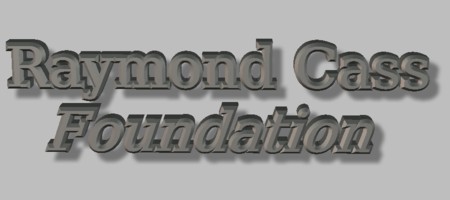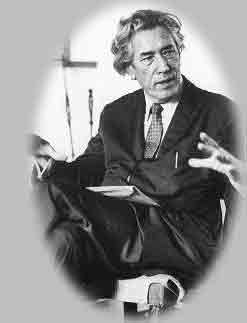1903-1938
Friedrich Jürgenson was born in Odessa on February 8th 1903. His mother was Swedish and his father was of Danish descent, practising as a physician in Odessa where the family had moved from Estonia.
After living through World War One and the Russian Revolution as a child, Jürgenson trained as a painter at the Art Academy and as a singer and musician at the Odessa Conservatory, where he was a contemporary of the concerto pianist Svjatoslav Richter.
In 1925 the family was allowed to move back to Estonia where Friedrich continued his training as a singer and painter and shortly afterwards he moved to Berlin for more studies. Here his tutor was the bass-singer Tito Scipa. Scipa, a Jew, fled to Palestine in 1932 and Jürgenson accompanied him, staying for 6 years. During this period while still studying he made a living as a singer and painter and some forecast a successful career in opera for him.
1938-1957
In 1938 Jürgenson left Palestine for Milan for more studying and performances. In 1943 when he went to visit his parents, the colder climate caused him serious health problems and his voice was partly damaged, so he decided to give up his professional opera career to concentrate entirely on painting. He was a realist painter, mostly doing portraits, landscapes and still life.
Driven out by war in that year he moved to Sweden. Located in Stockholm, he married and became a Swedish citizen. Here he also learnt his tenth language. During the following years he painted portraits of wealthy Swedes and motifs from Stockholm. In 1949 he visited Pompeii in Italy and to get more access to the buried city he showed some of his work to the Vatican and a few days later he received a proposal: the Vatican recognised his talents and asked him to catalogue their archaeological works buried beneath the Holy City. He returned the following year and for four months sat in this damp underworld, painted and contracted pneumonia. The Vatican medics cured him and when Pope Pius XII saw the results of his work he asked Jürgenson to paint a portrait of him. In all, Jürgenson produced four portraits of The Pope. Now he had full access to Pompeii as well and he returned there many times to paint.
1957-1987
In 1957 Jürgenson bought a tape-recorder to record his own singing and he started to notice at this time some quite strange phenomena; inexplicable fade-ins and fade-outs on the tapes; abstract visions and telepathic messages. Jürgenson understood that these events were produced by his highly developed aural and visual senses caused by his artistic prowess.
In the following year Jürgenson had his first major exhibition amidst the ruins of Pompeii.
Back in Stockholm his telepathic contacts continued:
"I sat by the table, clearly awake and relaxed. I sensed that soon something was going to happen. Following an inner pleasurable calmness, long sentences in English appeared in my conciousness. I did not perceive these sentences acoustically but they formed themselves as long phonetic sentences and after a closer study I couldn't conceive the words as correct English but in a disfigured almost alphabetical way - completely deformed. I did not hear a voice, a sound nor a whisper. It was all soundless."
Later he also recalled that in the spring of 1959 he "got a message about a Central Investigation Station In Space, from where they conducted profound observations of Mankind" and "My friends spoke about certain electro-magnetic screens or radars, that were frequently transmitted, day and night, in thousands to our three dimensional life levels and like living beings had a mission as mental messengers. Undoubtedly one could see these radars as half-living robots that, remote controlled, had the ability like an oversensitive television or radio to correctly register and transmit all our conscious and unconscious impulses, feelings and thoughts." Jürgenson knew that these fantastic facts really belonged in a Science Fiction world but he carried on hoping to capture these messages on tape.
On June 12, 1959, Jürgenson, and his wife Monica went to visit their country house to enjoy the warm summer. Jürgenson brought his tape-recorder to record the singing of wild birds, especially the chaffinch.
Listening to the tape he "heard a noise, vibrating like a storm, where you could only remotely hear the chirping of the birds. My first thought was that maybe some of the tubes had been damaged. In spite of this I switched on the machine again and let the tape roll. Again I heard this peculiar noise and the distant chirping. Then I heard a trumpet solo, a kind of a signal for attention. Stunned, I continued to listen when suddenly a man's voice began to speak in Norwegian. Even though the voice was quite low I could clearly hear and understand the words. The man spoke about 'nightly bird voices' and I perceived a row of piping, splashing and rattling sounds. Suddenly the choir of birds and the vibrating noise stopped. In the next moment the chirping of a chaffinch was heard and you could hear the tits singing at a distance - the machine worked perfectly!"
From this point Jürgenson continued to investigate in these phenomena and at first he thought it was his "friends from outer space" but very soon he began to believe that these voices were "from the other side", or the 'Voices of the Dead'. Was he close to solving one of the fundamental mysteries of death?
At this moment Jürgenson experienced a remarkable event that would change his life:
"I was outside with a tape recorder, recording bird songs. When I listen through the tape, a voice was heard to say "Friedel, can you hear me. It's mammy ...." It was my dead mothers voice. 'Friedel' was her special nickname for me."
At this point Jürgenson abandoned painting for his audio recordings and in 1964 he published 'The Voices From Space' (Rösterna Från Rymden, Saxon & Lindström Förlag, Stockholm):
"My love for the arts was still alive now as ever, and I heartsearchingly asked myself if it was the right thing for me to abandon the art of painting - a creative occupation that I had submitted my whole life to" and later "instead I was sitting here with an enormous jigsaw puzzle brooding in despair over the problem of whether one could assemble a more complete picture from all these fragments. And, likewise ...I had never before been so touched and captured by any other urgencies than by these mystical connections, literally floating in the ether."
Now located in Mölnbo, south of Stockholm, Jürgenson held his first press conference and the Swedish press were stunned by Jürgenson's scientific approach to these matters and were understandingly critical. International Paranormal Societies, as well as the Max Planck Institute, the University of Freiburg and the Parapsychological Association in the USA, also took a keen interest and others, like Konstantin Raudive and Claude Thorlin, came to visit and began to work with tape recorders.
At first Jürgenson only used a microphone and a tape recorder. He simply set up the microphone, set the recorder to 'record' and spoke clearly into the room, leaving space for voices to respond. This was a bit tricky for Jürgenson since he always had to play back the tape, sometimes at a lower speed, to hear the voices. These voices spoke in a combination of various languages such as Swedish, German, Russian, English, Italian - all languages that Jürgenson knew and could speak. He called this new mixture of languages 'polyglot', or 'many tongues'.
In spring 1960 one of the voices told him to "use the radio" as a medium and this was the technique he used until his death. He connected a microphone and a radio receiver to the tape recorder and in this way he could have a real-time conversation with his "friends". Usually he set the radio reception in between the frequencies where there's generally a variation of noises. Later he fixed the receiving frequencies to around 1445-1500 kHz (1485.0 kHz is now called the Jürgenson Frequency).
In 1965 Jürgenson took up painting again but his main activity remained recording. At this time he also revisited Pompeii and found that the site was being mistreated; sponsored by Swedish National Television he made the documentary film "Pompeii - a cultural relic that must be preserved" in 1966. A vast output followed in the ensuing years from this highly energetic and creative figure.
In 1967 a book was published by Verlag Hermann Bauer KG in Freiburg called 'Sprechfunk Mit Verstorbenen' about this electronic voice phenomena, or 'EVP', as it became known, and in 1968 four documentaries were produced: "The Temples at Paestum and the City of Temples and Graves", a film on the ancient Greek city south of Salerno, "Death of Birds In Italy", about the purposeless killing of birds in Italy, "The Miracle of the Blood of St Gennaro", about the famous blood phenomenon in Naples, and a film documenting Jürgenson's own archaeological diggings at Pompeii.
In 1968 his third book was published in Swedish: "Radio and Microphone Contacts with the Dead" (Radio och Mikrofonkontakt med de Döda, Nybloms, Uppsala). Rome was impressed with Jürgenson's documentary output. The result of his work at Pompeii was another mission for the Vatican and in 1969 his documentary "The Fisherman from Gallilea - On the Grave and Stool of Peter" was finished and for this Jürgenson received the Order of Commendatore Gregorio Magno from the hand of Pope Paul VI. Short after he also made a film about the life of the Pope and the quality of the film caused Paul VI to contact Jürgenson again. Jürgenson then painted three portraits of his second Pope. Around this time he was also permitted to conduct his own archaeolocical diggings in Pompei and he dug out the large domestic house of the former govenor in Pompei.
In the 1970s Jürgenson continued to record and paint. Moving from Mölnbo to Höör in Skåne, southern Sweden, he found a more peaceful place for his work. Age began to take out its toll and Jürgenson spent more time with his recordings at home, making an occasional trip to Italy. There was also serious talk about founding an EVP research institute in Italy. In 1978 he held his third press conference and gave a huge number of lectures. Here he predicted that soon we will be able to recieve messages through the TV as well. He now labelled the work 'Audioscopic Research'. The German book was translated into Dutch, Italian and Portuguese at the beginning of the Eighties. In 1985 he held his last press conference in conjunction with a nationwide television appearance.
Friedrich Jürgenson died in October 1987 and left several hundred tapes of recorded material.
You can buy a CD of his work. Please check here
Thanks to Carl Michael von Hausswolff, Stockholm 2000, Friedrich Juergenson Foundation. http://www.fargfabriken.se/fjf/
For any information please contact us at the email address below.















